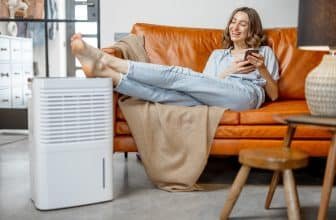Ionic Air Purifiers: How They Work and Their Benefits
Ionic air purifiers are a popular choice for people looking to improve their indoor air quality. These devices use ionizers to remove small particles from the air, such as dust, pollen, and smoke. Ionic air purifiers work by emitting negatively charged ions that attract positively charged particles in the air. Once the particles are attracted to the ions, they become too heavy to remain in the air and fall to the ground or are caught by the purifier’s filters.
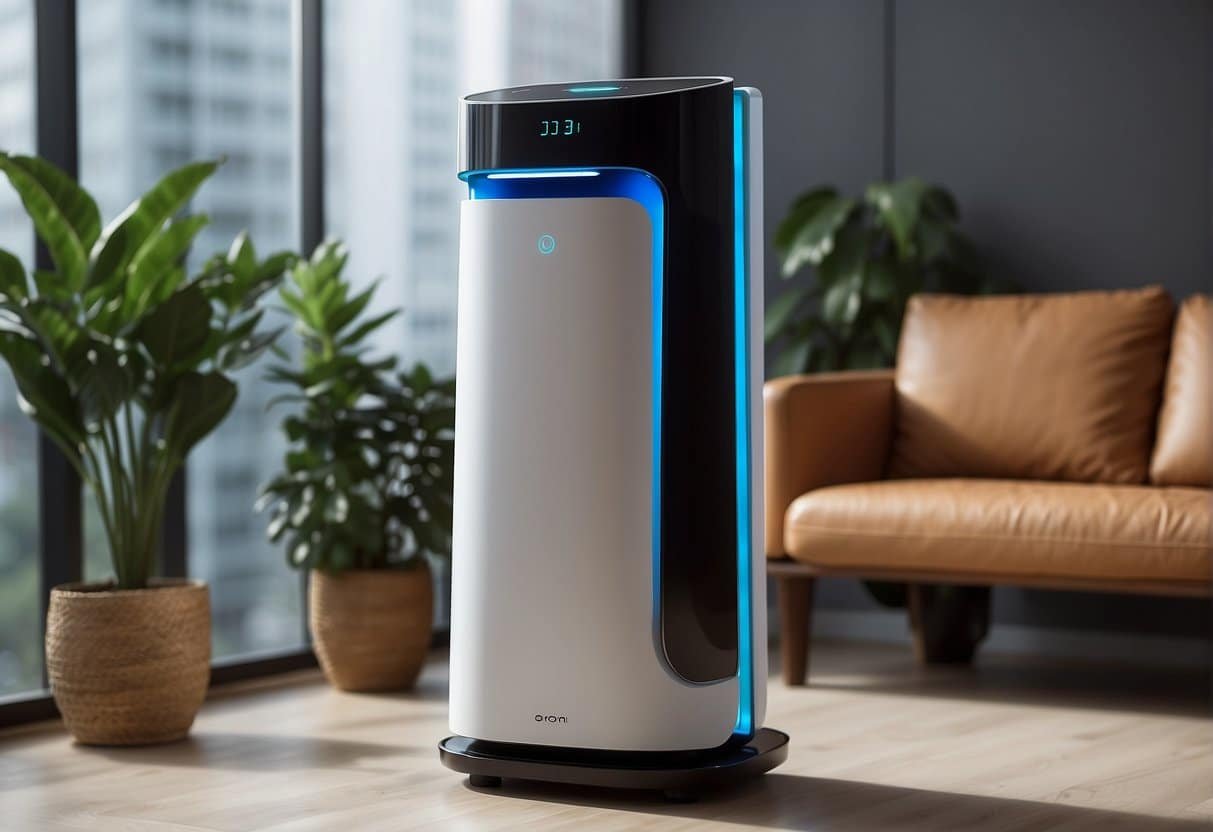
One of the benefits of using an ionic air purifier is that it can help reduce the number of airborne particles in your home or office. This can be particularly helpful for people who suffer from allergies or respiratory conditions. Another benefit is that ionic air purifiers are often quieter and more energy-efficient than other types of air purifiers. However, it is important to note that ionic air purifiers can produce ozone, which can be harmful to some people, especially those with asthma or other respiratory conditions.
The Power of Ions: Decoding the Operation and Benefits of Ionic Air Purifiers
- Ionic air purifiers use ionizers to remove small particles from the air and can improve indoor air quality.
- They can be helpful for people with allergies or respiratory conditions, but may produce ozone, which can be harmful to some people.
- When considering purchasing an ionic air purifier, it is important to weigh the benefits and potential drawbacks and consider safety and regulations.
Understanding Ionic Air Purifiers
Ionic air purifiers are electronic devices that use negatively charged ions to remove particles and pollutants from the air. They are a popular alternative to traditional air purifiers that use filters to trap pollutants. In this section, we will explore how ionic air purifiers work, the types of ionic air purifiers available, and their key components.
How Ionic Air Purifiers Work
Ionic air purifiers work by releasing negatively charged ions into the air. These ions attach themselves to positively charged particles, such as dust, pollen, and other pollutants, causing them to become negatively charged. The negatively charged particles then become attracted to positively charged surfaces, such as walls and floors, where they can be easily cleaned.
One of the main benefits of ionic air purifiers is that they do not require filters, which can be expensive and time-consuming to replace. However, some ionic air purifiers do come with filters, such as activated carbon filters, that can help to remove larger particles from the air.
Types of Ionic Air Purifiers
There are two main types of ionic air purifiers: air ionizers and ozone generators. Air ionizers work by releasing negatively charged ions into the air, while ozone generators work by releasing ozone, which can help to neutralize odors and kill bacteria.
Air ionizers are the most common type of ionic air purifier and are often used in homes and offices. They are generally considered safe to use, but some people may experience respiratory problems if they are exposed to high levels of negatively charged ions.
Ozone generators, on the other hand, are not recommended for use in homes or offices as they can produce high levels of ozone, which can be harmful to humans and pets.
Key Components
The key components of an ionic air purifier include the ionizer, the filter (if applicable), and the fan. The ionizer is responsible for releasing negatively charged ions into the air, while the filter helps to remove larger particles from the air. The fan helps to circulate the air and distribute the negatively charged ions throughout the room.
It is important to note that ionic air purifiers should be used in conjunction with other methods of air purification, such as regular cleaning and ventilation. While they can be effective at removing certain types of pollutants from the air, they may not be able to remove all pollutants, such as viruses and bacteria.
Benefits of Ionic Air Purifiers
Air Quality Improvement
Ionic air purifiers are known for their ability to improve indoor air quality by effectively removing various pollutants and allergens. The negative ions released by these purifiers attach to airborne particles such as dust, pollen, and other allergens, causing them to fall to the ground or be trapped by the purifier. This process results in cleaner air, which is particularly beneficial for individuals with asthma or allergies. By reducing the presence of these irritants, ionic air purifiers can contribute to a healthier indoor environment.
Health Benefits
One of the key advantages of ionic air purifiers is their potential to alleviate respiratory issues by reducing the presence of airborne bacteria, viruses, and mold. This can be especially beneficial for individuals with compromised immune systems or those susceptible to respiratory infections. By effectively eliminating harmful microorganisms from the air, ionic air purifiers may contribute to a healthier living environment and potentially reduce the risk of airborne illnesses.
Considerations Before Buying
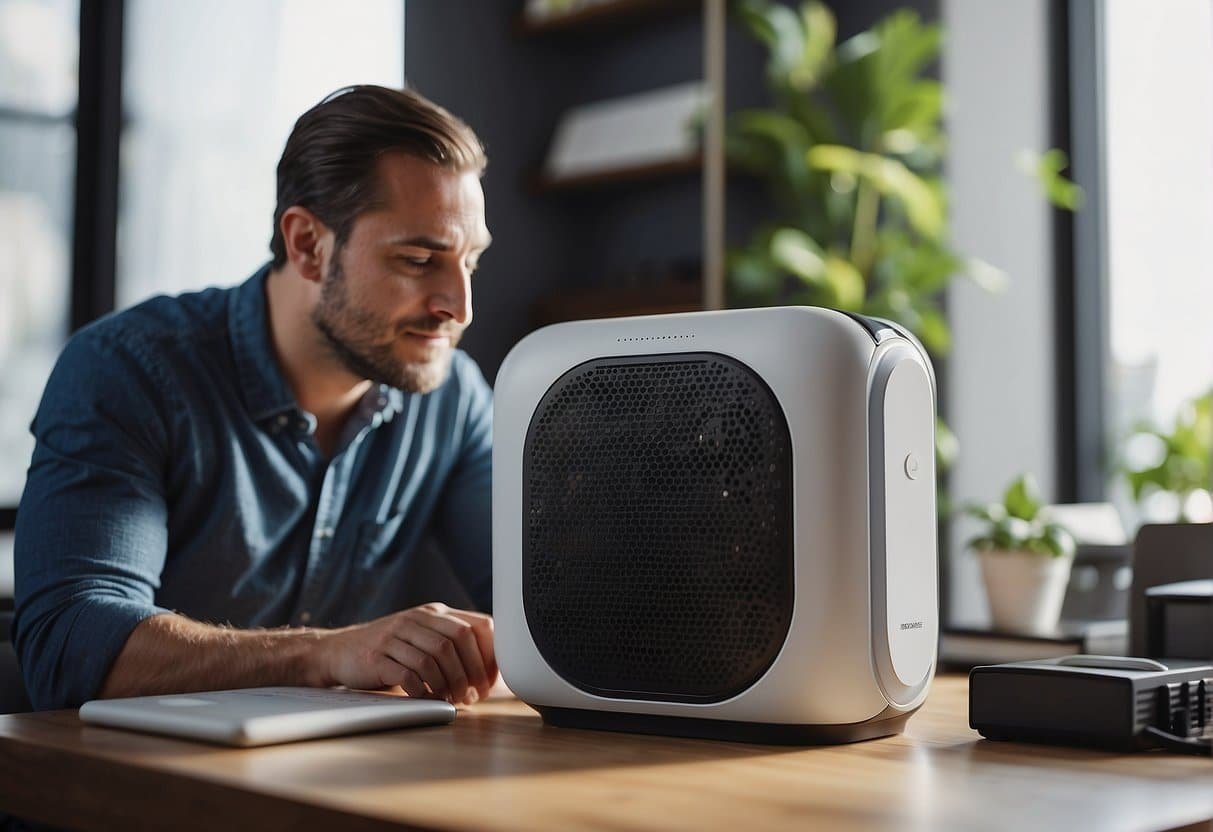
When it comes to buying an ionic air purifier, there are a few key considerations to keep in mind. By considering these factors, you can ensure that you select the best ionic air purifier for your needs.
Room Size and Coverage
One of the most important factors to consider when selecting an ionic air purifier is the size of the room in which it will be used. Ionic air purifiers are designed to work in different room sizes, so it is important to choose one that is appropriate for the size of your room. Some ionic air purifiers are designed for small rooms, while others are better suited for larger spaces.
Specific Features
Another important consideration is the specific features that you are looking for in an ionic air purifier. Some models come with a timer, which allows you to set the purifier to turn on or off at specific times. Other models are portable, making them easy to move from room to room. Some ionic air purifiers also come with smart features, such as the ability to be controlled via a smartphone app.
Budget and Price
Finally, it is important to consider your budget when selecting an ionic air purifier. There are many different models available on the market, ranging in price from budget-friendly options to high-end models with advanced features. By setting a budget before you begin shopping, you can narrow down your options and find the best ionic air purifier for your needs without overspending.
When considering all of these factors, it is important to keep in mind that the best ionic air purifier for one person may not be the best option for another. By carefully evaluating your specific needs and preferences, however, you can select an ionic air purifier that offers the best performance and value for your individual situation.
Potential Drawbacks
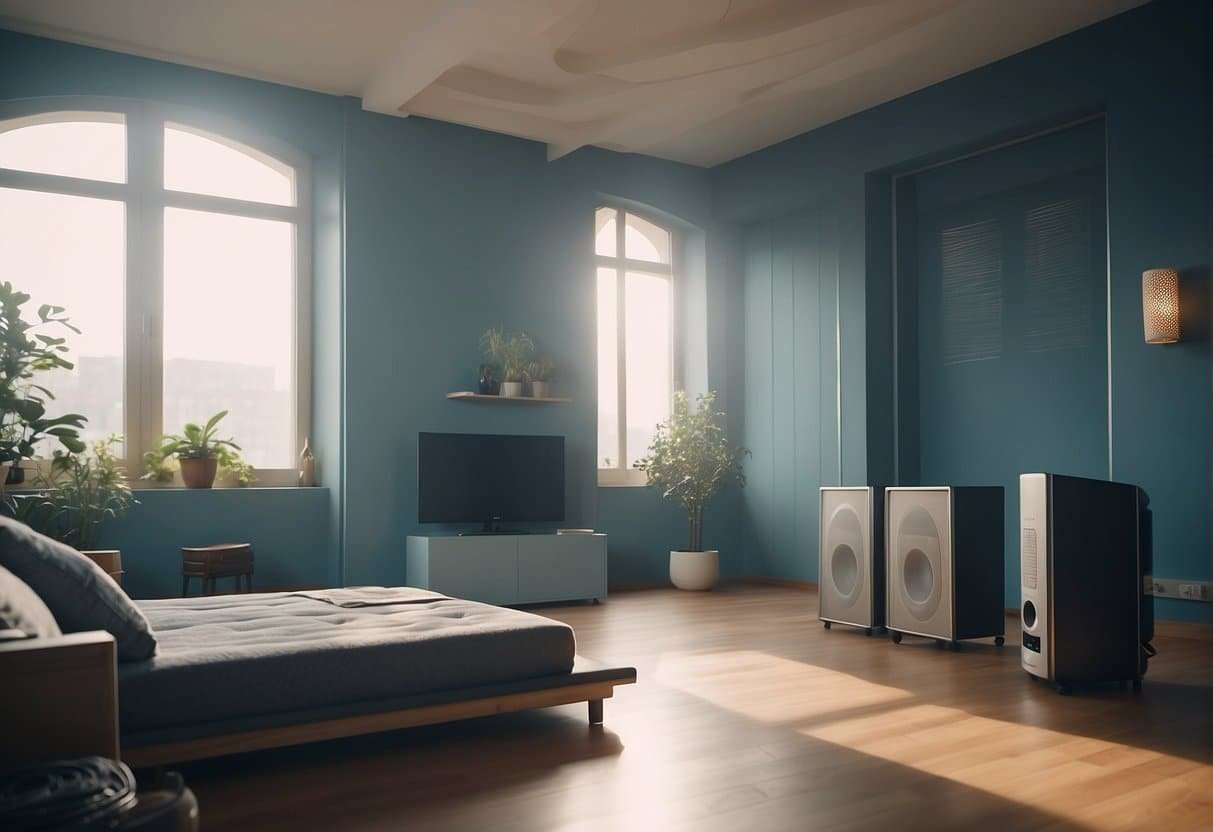
Ionic air purifiers have potential drawbacks that should be taken into account before purchasing one. The following subsections will explore some of these drawbacks.
Ozone Production Concerns
One of the main concerns with ionic air purifiers is the production of ozone. While ozone is an effective air cleaner, it can also be harmful to human health. According to the Environmental Protection Agency (EPA), ozone can cause respiratory problems, chest pain, and throat irritation. Therefore, it is important to choose an ionic air purifier that produces a low level of ozone.
The California Air Resources Board (CARB) has set a limit of 0.050 parts per million (ppm) of ozone emission for indoor air cleaning devices. It is recommended to choose an ionic air purifier that meets this standard or produces even lower levels of ozone.
Maintenance and Cleaning
Ionic air purifiers require regular maintenance and cleaning to function properly. The ionizing wires and collection plates need to be cleaned to prevent the buildup of dirt and dust. If not cleaned regularly, the efficiency of the air purifier will decrease, and it may even produce more pollutants than it removes.
In addition to cleaning, the filters of the air purifier need to be replaced periodically. The frequency of filter replacement depends on the model and usage of the air purifier. It is important to follow the manufacturer’s instructions for filter replacement to ensure optimal performance of the air purifier.
Overall, while ionic air purifiers can be effective in improving indoor air quality, they do have potential drawbacks that should be considered before making a purchase. It is important to choose a model that produces a low level of ozone and to perform regular maintenance and cleaning to ensure optimal performance.
Comparing Ionic Air Purifiers to Other Types
When it comes to selecting an air purifier, there are several types to choose from. Two of the most popular types of air purifiers are HEPA filters and activated carbon filters.
HEPA Filters
HEPA filters are highly efficient at capturing small particles and pollutants in the air, such as pollen, dust mites, and pet dander. HEPA filtration works by forcing air through a dense mesh of fibers that trap particles as small as 0.3 microns in size. These filters are used in many different types of air purifiers, including ionic air purifiers.
Activated Carbon Filters
Activated carbon filters are designed to remove odors, gases, and chemicals from the air. These filters work by absorbing pollutants onto a porous surface, which traps the pollutants and prevents them from being released back into the air. Activated carbon filters are often used in combination with HEPA filters to provide comprehensive air purification.
Ionic air purifiers, on the other hand, work by releasing negatively charged ions into the air. These ions attach to positively charged particles, such as dust and allergens, causing them to become too heavy to remain in the air and fall to the ground. While ionic air purifiers are effective at removing some pollutants from the air, they are not as effective as HEPA filters at capturing small particles.
It is important to note that some ionic air purifiers also include activated carbon filters to help remove odors and chemicals from the air. However, it is important to choose an air purifier that has been independently tested and certified to ensure that it is effective at removing pollutants from the air.
In summary, while ionic air purifiers can be effective at removing some pollutants from the air, they are not as effective as HEPA filters at capturing small particles. It is important to carefully consider the type of air purifier that is best suited for your specific needs and to choose a model that has been independently tested and certified to ensure its effectiveness.
Top Ionic Air Purifier Models
When it comes to choosing the best ionic air purifier, there are many factors to consider, including room size, portability, and price. Here are some of the top models that excel in these categories:
Best for Large Rooms
The Fellowes AeraMax 300/DX95 Ionic Air Purifier is a top pick for larger rooms. It has a four-stage filtration system that includes a True HEPA filter, activated carbon filter, and antimicrobial treatment. It can purify the air in rooms up to 600 square feet, making it a great choice for living rooms, bedrooms, and other common areas.
Best for Portability
For those who need a compact and portable ionic air purifier, the Airthereal APH260 Ionic Air Purifier is a great option. It has a sleek design that fits easily on a desk or nightstand, and it can purify the air in rooms up to 355 square feet. It also includes a True HEPA filter and activated carbon filter for thorough air purification.
Best Budget-Friendly Options
If you’re looking for a budget-friendly ionic air purifier, the Fellowes AeraMax 100/DX5 Ionic Air Purifier is a great choice. It’s designed for rooms up to 100 square feet, making it ideal for small bedrooms or home offices. It includes a True HEPA filter and antimicrobial treatment for effective air purification, and it’s priced affordably for those on a tight budget.
Another budget-friendly option is the Envion Ionic Pro Turbo Ionic Air Purifier. It’s compact and portable, making it easy to move from room to room as needed. It uses a combination of ionization and electrostatic filtration to purify the air, and it’s priced affordably for those who want a high-quality ionic air purifier without breaking the bank.
Overall, these top ionic air purifier models offer a range of features and benefits to suit different needs and preferences. Whether you’re looking for a top pick for large rooms, a portable and compact option, or a budget-friendly choice, there’s an ionic air purifier on the market that can meet your needs.
Safety and Regulations
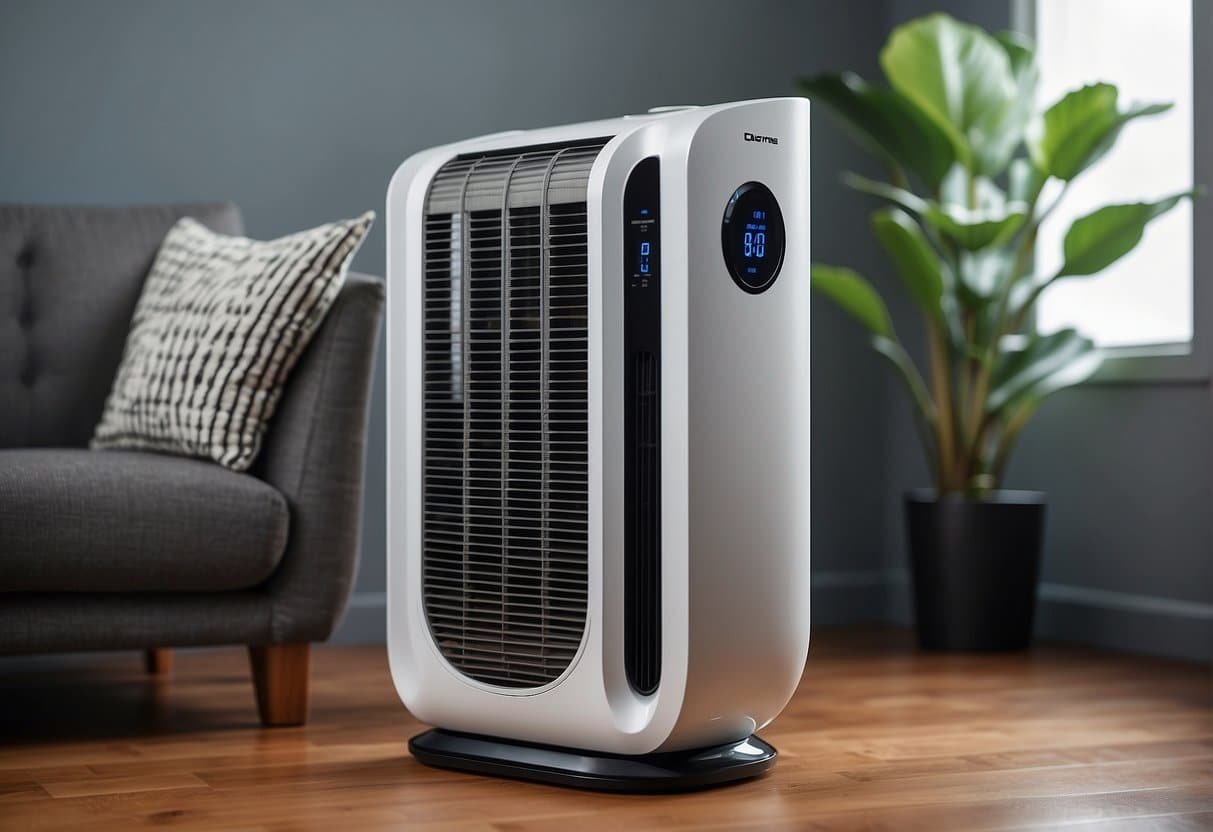
Regulatory Standards
In the United States, the Environmental Protection Agency (EPA) regulates air purifiers and sets standards for their safety and effectiveness. The California Air Resources Board (CARB) also sets regulations for air purifiers sold in California. Ionic air purifiers are subject to these regulations and must meet certain requirements to be considered safe for use.
One important standard for air purifiers is the ozone emission limit. Ozone is a harmful gas that can cause respiratory problems and other health issues. The EPA limits the amount of ozone an air purifier can emit to 0.05 parts per million (ppm) over an eight-hour period. CARB has a more stringent limit of 0.050 ppm over a one-hour period. It is important to note that some ionic air purifiers produce ozone as a byproduct, which can be harmful if not properly regulated.
Safe Usage Tips
To ensure safe and effective use of an ionic air purifier, it is important to follow some basic guidelines. First, always read the manufacturer’s instructions and follow them carefully. This includes information on where to place the air purifier, how often to clean it, and how to replace filters.
It is also important to choose an air purifier that is user-friendly and easy to maintain. Look for models that have washable filters or require minimal maintenance. This will help ensure that the air purifier remains effective and safe to use over time.
Finally, be aware of any potential health risks associated with ionic air purifiers. While they can be effective at removing pollutants from the air, they can also produce ozone and other harmful byproducts if not properly regulated. If you have any concerns about the safety of an ionic air purifier, consult with a qualified professional or contact the manufacturer for more information.
Innovations and Developments
Ionic air purifiers have come a long way since their inception. With technological advancements and research, they have become more effective and efficient in improving indoor air quality. In this section, we will explore some of the recent developments in the realm of ionic air purifiers.
Technological Advancements
Ionic air purifiers have incorporated smart features that allow them to be controlled remotely through smartphones and voice assistants. These features make it easier for users to monitor and control the air purifier’s performance. Some air purifiers also come with UV light technology, which can help eliminate harmful viruses and bacteria from the air.
Research and Studies
There have been numerous studies on the effectiveness of ionic air purifiers in improving indoor air quality. A study published in the Journal of Environmental Science and Health found that ionizers were effective in reducing airborne bacteria and viruses. Another study published in the Journal of Aerosol Science found that ionizers were effective in reducing particulate matter in the air.
However, it is important to note that not all ionic air purifiers are created equal. Some may perform better than others, and it is important to do thorough research before purchasing one.
Overall, with the advancements in technology and research, ionic air purifiers have become more effective in improving indoor air quality. Users can now enjoy cleaner air and better health with the help of these innovative devices.
Maintenance and Care
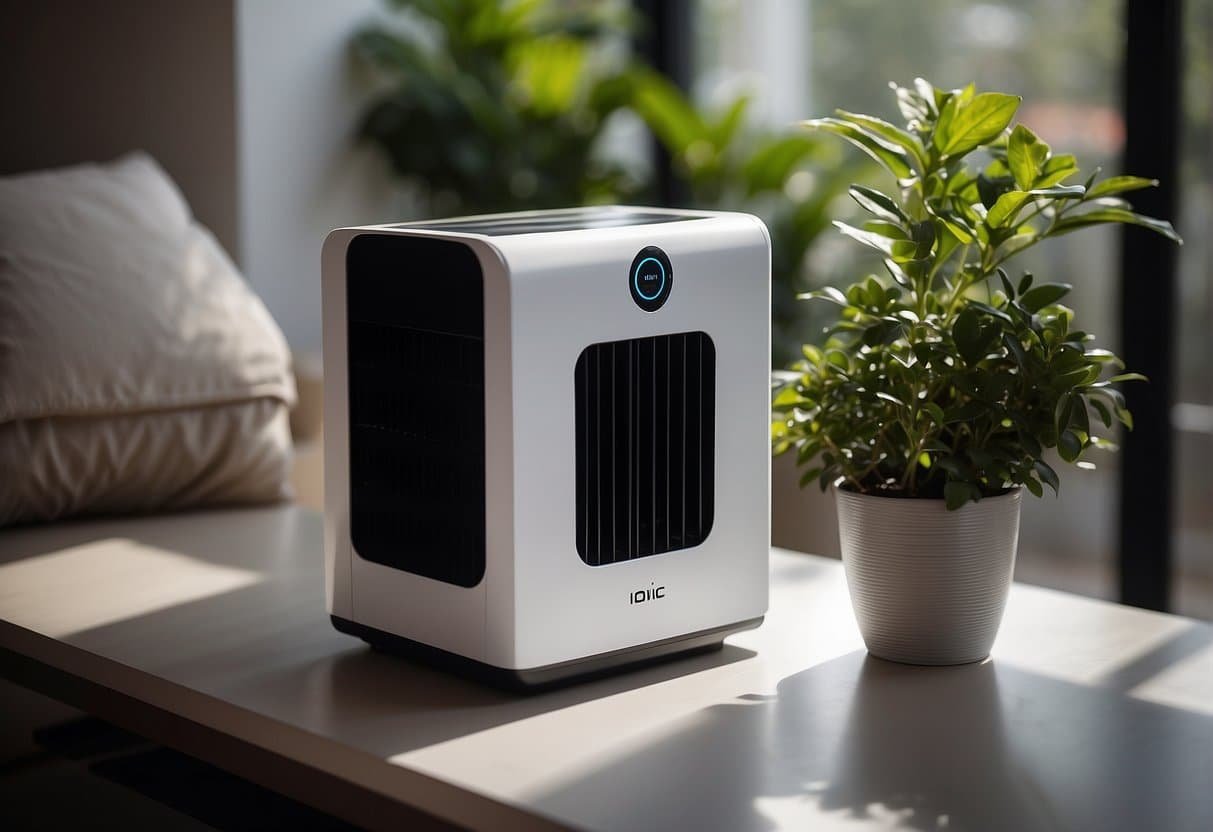
Cleaning Procedures
To ensure the optimal performance of an ionic air purifier, regular cleaning is necessary. Cleaning frequency depends on the manufacturer’s recommendations and the environmental conditions of the room where the air purifier is used.
The cleaning process for an ionic air purifier usually involves wiping down the exterior and cleaning the ionizing wires. For example, to clean an Ionic Pro Air Purifier, unplug the power cable and remove the cover on top by lifting it up. The cover should fit snugly into place, which may make it difficult to remove. As a result, you need to get a good grip on it and wiggle it around to loosen it up. The cover is attached via a ribbon, so be careful not to damage it. Use a soft, damp cloth to clean the exterior of the unit and the ionizing wires.
Similarly, to clean a Clarifion Air Ionizer, use a microfiber towel to gently wipe away the dust that has accumulated on the outside. It’s best to do this twice a week, especially over the air intake. There’s no need to open it or remove the filters to clean a Clarifion air ionizer.
When cleaning an Ionic Breeze Air Purifier, it’s important to follow the manufacturer’s instructions. The cleaning process includes cleaning the exterior of the unit and the ionizing wires. The cleaning methods for the Ionic Breeze Air Purifier and Ikea Air Purifier are similar. It’s important to note that improper cleaning of an ionic air purifier can damage the unit and reduce its effectiveness.
In addition to cleaning, regular maintenance of the air filters is necessary to ensure the optimal performance of an ionic air purifier. The frequency of filter replacement depends on the manufacturer’s recommendations and the environmental conditions of the room where the air purifier is used. It’s important to follow the manufacturer’s instructions for filter replacement to ensure the optimal performance of the unit.
Frequently Asked Questions
What are the potential health risks associated with using an ionic air purifier?
Ionic air purifiers produce negatively charged ions, which attach to positively charged particles in the air, causing them to fall to the ground or stick to surfaces. However, some ionic air purifiers also produce ozone, which can be harmful to humans when inhaled in large quantities. It is important to choose an ionic air purifier that emits a safe level of ozone, and to follow the manufacturer’s instructions for safe use.
How do ionic air purifiers compare to HEPA air purifiers in terms of effectiveness?
Ionic air purifiers are generally less effective than HEPA air purifiers at removing larger particles such as dust and pollen from the air. However, they are more effective at removing smaller particles such as smoke and odors. HEPA filters are also better at removing bacteria and viruses from the air. It is important to choose the type of air purifier that best suits your needs.
Can ionic air purifiers operate effectively without a traditional filter?
Some ionic air purifiers do not require a traditional filter, as they use electrostatic plates to capture particles. However, these plates need to be cleaned regularly to maintain their effectiveness. Other ionic air purifiers do use a traditional filter in addition to the electrostatic plates.
What are the main benefits of using an ionic air purifier?
Ionic air purifiers are generally quieter and more energy-efficient than HEPA air purifiers. They are also effective at removing smaller particles such as smoke and odors from the air. Additionally, some models do not require replacement filters, which can save money in the long run.
How do I determine the best ionic air purifier to purchase for my needs?
When choosing an ionic air purifier, consider factors such as room size, noise level, and maintenance requirements. Look for models that emit a safe level of ozone and that have been certified by reputable organizations such as the California Air Resources Board. Read reviews from other users to get an idea of the product’s effectiveness and reliability.
Are there any maintenance requirements unique to ionic air purifiers?
Many ionic air purifiers require regular cleaning of the electrostatic plates to maintain their effectiveness. Some models also require replacement of the traditional filter. It is important to follow the manufacturer’s instructions for cleaning and maintenance to ensure that the air purifier continues to operate effectively.
best air purifiers
My name is Philipp Walz, editor at best-air-purifiers.com, and I’m truly passionate about creating healthier living spaces through smart, effective air purification. For me, air purifiers aren’t just appliances – they’re a quiet revolution in how we breathe, live, and feel at home. Clean air means better sleep, clearer thinking, and fewer allergies. It’s about giving our bodies what they need most: pure, fresh air. I’ve experienced firsthand how the right air purifier can transform a space and improve well-being – and I’m here to help others discover that difference. Because when you breathe better, you live better.



